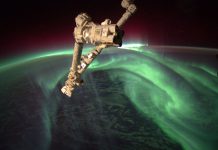Nasa’s Aqua satellite captured a stunning image of the Black Sea from space, as turquoise swirls dominated the usually dark blue waters. These jewel-toned hues appear each summer as microscopic phytoplankton trace the flow of water currents and eddies on the shores of Istanbul
These jewel-toned hues appear each summer as microscopic phytoplankton trace the flow of water currents and eddies on the shores.
This particular turquoise colour is likely due to the growth of a particular phytoplankton called a coccolithophore, while other species can result in different shades.
The stunning satellite image was captured on May 29 2017 by the Moderate Resolution Imaging Spectroradiometer (MODIS) on Nasa’s Aqua satellite.
The image is a mosaic, composed from multiple satellite passes over the region.
Phytoplankton are floating, microscopic organisms that make their own food from sunlight and dissolved nutrients.
In the Black Sea, ample water flow from rivers like the Danube and Dnieper carries nutrients. In general, phytoplankton support fish, shellfish, and other marine organisms. But large, frequent blooms can lead to eutrophication – the loss of oxygen from the water – and end up suffocating marine life. One type of phytoplankton commonly found in the Black Sea are coccolithophores – microscopic plankton that are plated with white calcium carbonate.











